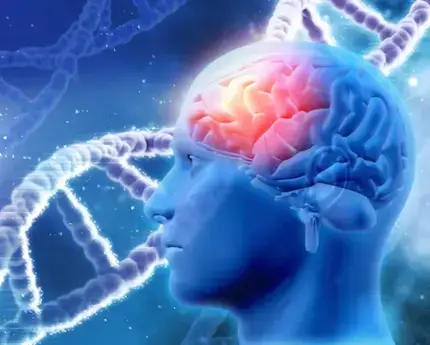
Introduction Neurology is a captivating branch of medical science that delves into the complexities of the human brain and nervous system. With its focus on the study, diagnosis, and treatment of neurological disorders, neurology plays a pivotal role in unraveling the mysteries of our most vital organ—the brain. In this comprehensive article, we will delve deep into the fascinating realm of neurology, exploring its significance, the intricacies of the nervous system, common neurological disorders, and the advancements being made in this field. Neurology: Decoding the Marvels of the Brain The field of neurology encompasses the study of the nervous system, which is responsible for transmitting signals throughout the body. This intricate network of nerves, cells, and specialized structures enables us to think, feel, move, and experience the world around us. Understanding the complexities of the nervous system is crucial for diagnosing and treating a wide range of neurological conditions. The Human Brain: An Astonishing Organ The human brain, often referred to as the command center of the body, is an extraordinary organ with a myriad of functions. From controlling our bodily functions to enabling complex cognitive processes, the brain is truly remarkable. Let’s delve into some of the key aspects of the human brain: 1. Structure and Functions of the Brain The brain is divided into several distinct regions, each responsible for different functions. These regions include: Cerebrum: The largest part of the brain, responsible for conscious thoughts, memory, and voluntary movements. Cerebellum: Located at the back of the brain, it coordinates movement, balance, and posture. Brainstem: Connecting the brain to the spinal cord, it regulates essential functions like breathing, heart rate, and blood pressure. 2. Neurotransmitters: Messengers of the Brain Neurotransmitters are chemicals that facilitate communication between nerve cells in the brain. They play a crucial role in various brain functions and emotions. Some well-known neurotransmitters include: Serotonin: Regulates mood, appetite, and sleep. Dopamine: Associated with pleasure, motivation, and reward. Acetylcholine: Involved in memory and muscle control. 3. Plasticity and Neurogenesis Contrary to the long-held belief that the brain doesn’t change after a certain age, research has shown that the brain is remarkably adaptable. Plasticity refers to the brain’s ability to reorganize itself and form new connections. Neurogenesis, on the other hand, refers to the generation of new neurons in certain regions of the brain, even in adulthood. 4. Common Brain Disorders The brain is susceptible to various disorders, which can have a significant impact on an individual’s quality of life. Some common neurological disorders include: Alzheimer’s disease: A progressive brain disorder that impairs memory and cognitive function. Parkinson’s disease: A degenerative disorder affecting movement and coordination. Epilepsy: A condition characterized by recurrent seizures caused by abnormal brain activity. The Role of Neurologists: Experts in Brain Health Neurologists are medical professionals specializing in the diagnosis and treatment of neurological disorders. With their extensive knowledge of the nervous system and its intricacies, neurologists play a vital role in ensuring brain health. They employ a range of techniques, including advanced imaging, neurological examinations, and specialized tests, to diagnose and manage various conditions. FAQs (Frequently Asked Questions) Q: What are some common symptoms of neurological disorders? A. Common symptoms of neurological disorders include headaches, dizziness, seizures, numbness or tingling, muscle weakness, and memory problems. Q: How are neurological disorders diagnosed? A. Neurological disorders are diagnosed through a combination of medical history evaluations, neurological examinations, imaging tests (such as MRI or CT scans), and specialized diagnostic procedures. Q: Can neurological disorders be prevented? A. While not all neurological disorders can be prevented, adopting a healthy lifestyle, managing stress, protecting the head from injuries, and getting regular exercise can contribute to brain health. Q: What are some treatment options for neurological disorders? A. Treatment options for neurological disorders vary depending on the specific condition but may include medications, physical therapy, occupational therapy, and in some cases, surgery. Q: Is there ongoing research in the field of neurology? A. Absolutely! Neurology is a rapidly advancing field, with ongoing research focusing on understanding the brain’s intricacies, developing innovative treatments, and improving patient care. Q: How can I maintain a healthy brain? A. Maintaining a healthy brain involves adopting a balanced diet, engaging in regular physical and mental exercise, getting adequate sleep, managing stress, and avoiding harmful substances. Conclusion Neurology, the study of the nervous system and its disorders, plays a vital role in unraveling the mysteries of the human brain. With its broad scope, neurology helps us understand brain function, diagnose and treat neurological conditions, and pave the way for groundbreaking medical advancements. By exploring the intricacies of the nervous system, neurologists continue to make strides in enhancing brain health and improving the lives of individuals affected by neurological disorders. Happy family store

Introduction When it comes to managing pain and reducing fever, two commonly used over-the-counter medications are ibuprofen and paracetamol. Both medications are widely available and offer effective relief for various conditions. However, there are some key differences between the two that are important to understand. In this article, we will delve into the difference between ibuprofen and paracetamol, exploring their mechanisms of action, uses, side effects, and more. Let’s dive in! Difference Between Ibuprofen and Paracetamol Ibuprofen and paracetamol are both analgesics and antipyretics, meaning they help relieve pain and reduce fever. However, they belong to different classes of medications and work in different ways within the body. Ibuprofen Ibuprofen is a nonsteroidal anti-inflammatory drug (NSAID) that works by inhibiting the production of certain chemicals in the body called prostaglandins. These prostaglandins play a role in the inflammation process, contributing to pain and fever. By blocking their production, ibuprofen helps reduce inflammation, relieve pain, and lower fever. Uses of Ibuprofen Pain relief: Ibuprofen is commonly used to relieve mild to moderate pain, such as headaches, dental pain, menstrual cramps, and musculoskeletal pain. Inflammation reduction: Due to its anti-inflammatory properties, ibuprofen is also used to reduce swelling and inflammation associated with conditions like arthritis and sports injuries. Fever reduction: Ibuprofen can effectively lower fever in individuals of all ages. Paracetamol Paracetamol, also known as acetaminophen, is classified as an analgesic and antipyretic but lacks significant anti-inflammatory properties. It works by inhibiting the production of prostaglandins in the brain that are responsible for pain and fever. Although the exact mechanism is not fully understood, paracetamol is believed to work primarily within the central nervous system. Uses of Paracetamol Pain relief: Paracetamol is commonly used to relieve mild to moderate pain, including headaches, toothaches, and muscle aches. It is also effective in managing pain associated with conditions like osteoarthritis. Fever reduction: Paracetamol is widely used to lower fever in adults and children. Key Differences Mechanism of action: Ibuprofen works by inhibiting the production of prostaglandins in the body, while paracetamol primarily works within the central nervous system to block pain and fever signals. Anti-inflammatory properties: Ibuprofen has significant anti-inflammatory effects, making it effective for reducing inflammation associated with conditions like arthritis. Paracetamol, on the other hand, lacks significant anti-inflammatory properties. Side effects: Ibuprofen can irritate the stomach lining and may cause gastrointestinal side effects such as indigestion and stomach ulcers. Paracetamol is generally well-tolerated but can cause liver damage if taken in excessive amounts or combined with alcohol. Suitable for different age groups: Ibuprofen is generally safe for children aged three months and above, while paracetamol is commonly used for children of all ages, including infants. Availability: Ibuprofen is available in various forms, including tablets, capsules, and topical gels, while paracetamol is available in tablets, capsules, syrups, and even suppositories for rectal administration. Both medications can be easily obtained over the counter without a prescription. Interactions with other medications: Ibuprofen may interact with certain medications, such as blood thinners and selective serotonin reuptake inhibitors (SSRIs), increasing the risk of bleeding or stomach ulcers. Paracetamol has fewer interactions with other medications, making it a safer choice for individuals taking multiple medications. Duration of action: Ibuprofen has a longer duration of action compared to paracetamol. While paracetamol may provide relief for up to 4-6 hours, ibuprofen’s effects can last for 6-8 hours. Allergic reactions: Some individuals may be allergic to ibuprofen or paracetamol. It is essential to be aware of any signs of an allergic reaction, such as rash, swelling, or difficulty breathing, and seek medical attention if necessary. Dosage and frequency: The recommended dosage and frequency of Ibuprofen and Paracetamol Suspension may vary depending on the age, weight, and condition being treated. It is crucial to follow the instructions provided by healthcare professionals or read the package insert carefully. Overdose risk: Taking excessive amounts of either ibuprofen or paracetamol can be harmful and lead to serious complications. It is vital to adhere to the recommended dosages and avoid combining these medications without medical advice. Frequently Asked Questions (FAQs) Q. Can I take ibuprofen and paracetamol together? A. Yes, in certain situations, it may be appropriate to take ibuprofen and paracetamol together for more potent pain relief. However, it is essential to consult a healthcare professional or pharmacist for appropriate dosing instructions. Q. Which is safer, ibuprofen, or paracetamol? A. Both ibuprofen and paracetamol are generally safe when used as directed. However, it is important to consider individual factors, such as medical history, current medications, and any underlying conditions, before choosing one over the other. Consulting a healthcare professional can help determine the safest option for you. Q. Can ibuprofen and paracetamol be given to children? A. Yes, both ibuprofen and paracetamol can be given to children, but the dosages and formulations may differ based on the child’s age and weight. It is crucial to follow the instructions provided by healthcare professionals and use appropriate pediatric formulations. Q. Are there any natural alternatives to ibuprofen and paracetamol? A. Yes, some natural alternatives to ibuprofen and paracetamol include herbal remedies like turmeric, ginger, and willow bark. However, it is essential to consult a healthcare professional before using these alternatives, as they may still have side effects and interactions with other medications. Q. Can I use ibuprofen or paracetamol during pregnancy? A. While both ibuprofen and paracetamol are commonly used during pregnancy, paracetamol is generally considered safer, especially during the first and third trimesters. Ibuprofen should be avoided, especially in the third trimester, as it may affect fetal development and increase the risk of complications. Q. Can ibuprofen and paracetamol cause addiction? A. No, neither ibuprofen nor paracetamol have addictive properties. They are not considered addictive substances. Conclusion In summary, while ibuprofen and paracetamol are both effective in relieving pain and reducing fever, they have distinct differences in their mechanisms of action, anti-inflammatory properties, side effects, and suitability for different age groups. Understanding these differences can help individuals make informed decisions

1